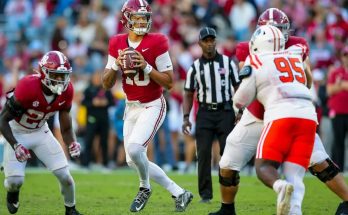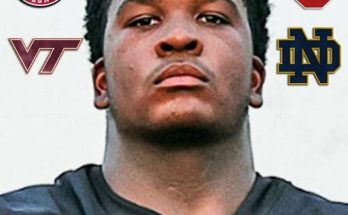The landscape of college athletics is undergoing a seismic shift. The NCAA’s multibillion-dollar settlement agreement, which aims to resolve several antitrust lawsuits and fundamentally reshape the structure of amateur athletics, has sent shockwaves across the country. While many institutions and administrators scramble to comprehend what comes next, Texas A&M Athletic Director Trev Alberts is not retreating in uncertainty—he’s charging ahead with clarity, vision, and ambition.
Alberts, a former Nebraska linebacker turned athletic executive, views the post-settlement era not as a threat but as a rare and transformative opportunity. In his view, this is not the death of college sports—it’s a rebirth. The past decade has seen the steady erosion of the old amateurism model, from the emergence of NIL (name, image, and likeness) rights to the increasing power of the transfer portal. But the latest NCAA decision—which opens the door to direct revenue sharing with athletes—signals a full-blown revolution. And Trev Alberts, with his trademark resolve, is prepared to lead Texas A&M through it.
From the moment the settlement was announced, Alberts has framed it as a strategic inflection point. “This is not something we should fear,” he said in a media session following the settlement’s approval. “It’s something we should prepare for and embrace. If you’re bold and intentional in times of change, you can create lasting advantages.” Those words have echoed across Aggieland, capturing the spirit of an athletic department that refuses to fall behind in the rapidly changing collegiate arms race.
For Alberts, this is about more than adjusting to legal realities—it’s about building a future-proof foundation. The financial model of college sports is being reimagined in real time, and with it, the power dynamics between schools, conferences, athletes, and fans. Texas A&M, under Alberts’ direction, is aiming to be not just reactive, but innovative. The university’s position in the SEC, its passionate fan base, deep-pocketed boosters, and elite facilities give it a powerful platform in this new era. Alberts intends to maximize every one of those assets.
While some schools may fear the implications of direct athlete compensation and potential unionization, Alberts believes Texas A&M is uniquely equipped to adapt. “We have the resources, the brand, and the alignment to compete and thrive,” he said. “But more importantly, we have the will.” That will, he insists, is what will separate the leaders from the laggards in the new college sports economy.
In many ways, Alberts’ forward-thinking approach is a continuation of his leadership style. At Nebraska, he helped stabilize an athletic department in turmoil, laying the groundwork for long-term competitiveness. Now at Texas A&M, he brings that same long-view lens to a program hungry for national relevance across multiple sports. The settlement, he argues, only accelerates the importance of institutional vision.
Texas A&M is already in motion. Behind the scenes, Alberts is assembling task forces and cross-departmental working groups to examine the university’s NIL strategy, athlete education, donor engagement, and compliance frameworks. The goal isn’t just to meet the NCAA’s new standards—it’s to set them. “The programs that embrace change and innovate will create distance,” Alberts said. “This is the time to build, not retreat.”
That mindset is resonating within the Aggie community. Coaches and staff have praised Alberts’ transparency and urgency. Donors, many of whom have been instrumental in NIL collectives and facility upgrades, are now being brought into the conversation about what revenue sharing could look like. And student-athletes are seeing firsthand a department that isn’t just reacting to change, but including them in shaping it.
What’s especially notable about Alberts’ stance is his focus on sustainability. While some ADs worry about ballooning expenses and legal exposure, he’s emphasizing structure and long-term planning. “We have to be disciplined. We can’t just throw money at problems. We need thoughtful systems that honor the athlete experience, maintain competitive integrity, and respect our academic mission,” he said.
In practice, that means Texas A&M is reevaluating everything—from scholarship limits and recruiting models to support services and roster management. Alberts has made it clear that his department will prioritize athlete well-being while remaining fiercely competitive. “You can do both,” he said. “That’s the great opportunity of this moment.”
There’s also the question of leadership beyond Texas A&M. Alberts has emerged as a respected voice in national conversations about reform, often speaking on panels or advising peer institutions. With the NCAA in flux and Congress considering federal legislation, voices like his may play a crucial role in shaping policy. His measured, pragmatic tone—coupled with a fierce belief in college sports as a public good—positions him as a bridge between traditionalists and reformers.
But leadership is more than public statements. It’s also about action—and Alberts is moving fast. Already, the athletic department is engaging consultants, financial advisors, and legal experts to prepare for what comes next. They’re exploring performance-based bonuses, academic incentives, and health benefits as part of a broader athlete compensation model. And they’re preparing to scale these systems across all sports, not just football and men’s basketball.
Perhaps most importantly, Alberts is focused on the culture he’s building. In his view, the schools that maintain trust, alignment, and shared purpose will emerge strongest. “This is a moment that tests leadership,” he said. “Not just mine, but across every level of this university and every program in the country. It’s going to take collaboration like we’ve never seen before.”
Indeed, collaboration may be the defining feature of this new era. The days of top-down control from the NCAA are waning. In their place, schools must navigate a more fluid, decentralized landscape—one where conference alliances, athlete advocacy groups, and institutional governance all play a role. Alberts seems unafraid of that complexity. In fact, he welcomes it. “This is where leadership counts,” he said. “When the rules are changing, that’s when the boldest organizations leap ahead.”
The stakes are enormous. Billions of dollars, decades of tradition, and the futures of thousands of student-athletes hang in the balance. But Alberts isn’t blinking. He believes Texas A&M’s moment is now—and that its potential is unlimited. “We have everything we need,” he said. “Now we just have to act.”
As the dust settles from the NCAA decision, the spotlight now shifts to implementation. Over the coming months, every school in the country will be forced to answer difficult questions: How will revenue sharing work? Will athletes be employees? What does competitive equity look like in this new world? At Texas A&M, those questions are already being tackled with urgency and intention.
Alberts knows there’s no playbook for what comes next. But he’s betting that boldness, discipline, and unity will carry the day. In the chaotic aftermath of the NCAA’s settlement, where many see confusion, he sees clarity: the chance to build something better, stronger, and more just. And he’s convinced that Texas A&M will not just keep up—it will lead.
This new era of college sports won’t be defined by fear—it will be defined by vision. And Trev Alberts, the man at the helm of Texas A&M athletics, is determined to make sure his university is remembered not just for surviving the storm, but for shaping the future that follows.



